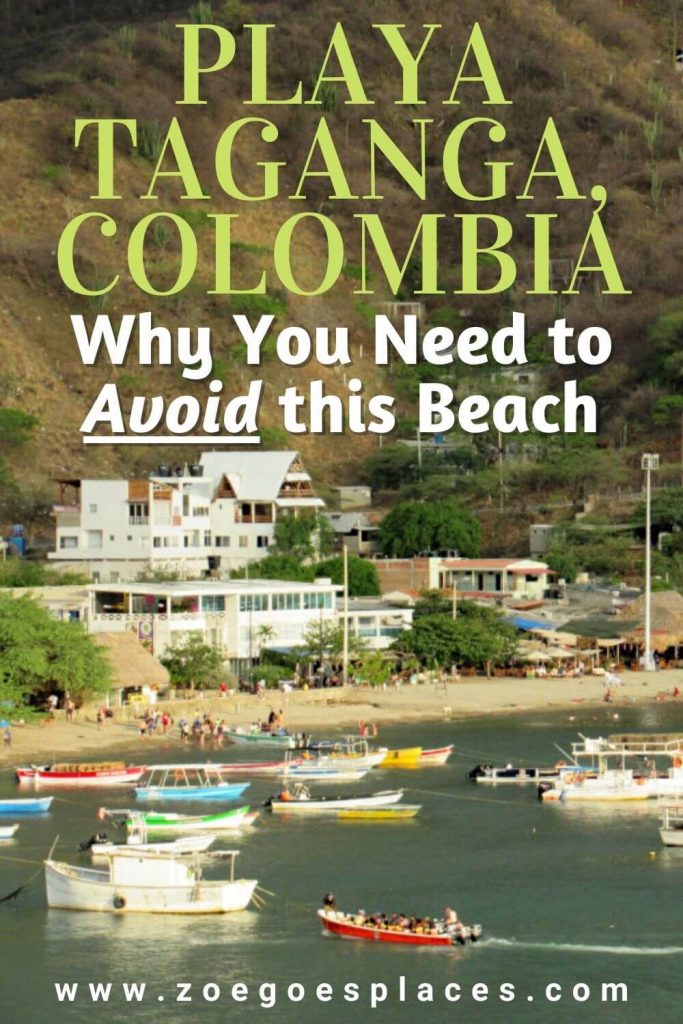Taganga: a small beach town on Colombia’s Caribbean coast just a stone’s throw from the city of Santa Marta. Beaches, scuba diving, beautiful weather and cheap prices. Yet for as idyllic as this sounds, it’s a town with a huge pollution problem. Playa Taganga as well as the town’s streets, shoreline and other beaches are littered with trash that laps in the waves and blows in the wind.
Find out more about this pollution problem in paradise as well as alternative nearby beaches with less trash in this honest guide.
Where is Playa Taganga?
Taganga Beach is located in the town of Taganga. This small town on Colombia’s Caribbean coast is located between Santa Marta and the Tayrona National Park. See the location on Google Maps here.
Taxis from Santa Marta Airport to Taganga take 45 minutes and cost 45,000 COP (fixed price). Alternatively, you can travel the 5 km from Santa Marta to Taganga by taxi or bus.
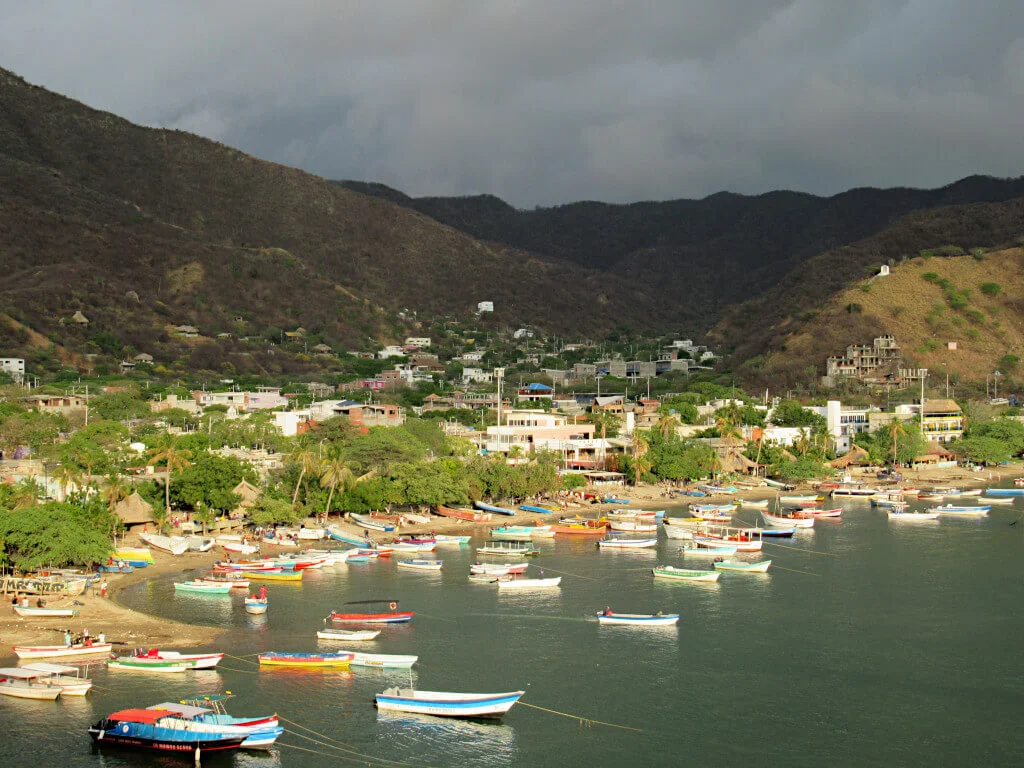
Everything You Need to Know about Playa Taganga, Santa Marta
Taganga’s namesake beach is the most central in the town, running the full width of the bay. And, in a town with a block system of roads, all roads lead to the beach (pretty much), so it’s easy to find.
The northern two-thirds of Taganga Beach is filled with small boats both on the shore and in the water. Subsequently, the southern-most part of the beach is where you’ll be able to sunbathe and get in the water. Disappointingly though, the beach is covered in trash.
However, Playa Taganga Santa Marta is not considered the main beach in the town. Rather, most people opt to travel slightly further along the coast of Playa Grande. In its own bay, Playa Grande Taganga has fewer boats and more space for picnics, sunbathing and beach games. But also has a significant litter problem.
Taganga Playa is however the place you want to go if you’re looking for a boat trip to Tayrona National Park. Though, you can also get boat trips to the nearby beaches in the bays to the northeast of the town.
Pollution in Paradise
Unfortunately, the whole beach is pretty heavy polluted. Litter is the main problem both on the shore and in the shallow water. Large amounts of plastic as well as ring pulls, cans and disused rope are everywhere. Furthermore, the problem doesn’t stop at the beach. The poorly maintained streets of Taganga are also covered in trash and provide a challenge to walk safely along.
This problem is further exacerbated by the heavy downpours that the rainy seasons bring to the Caribbean coast. In a rainstorm, the streets of Taganga become river-like. And, the flow of water brings more trash, loose branches and rocks down from the hills towards the beach and sea. Additionally, public services are limited. And, with no bins on the beaches, people often leave their trash in piles or on top of others’ bags of rubbish, which aren’t collected or disposed of properly.
In all honesty, it’s pretty grim. No one wants to be around so much trash, but it’s everywhere. It’s hard to enjoy the town when you’re amongst so much rubbish, including in the sand and sea. This is a particular problem as Taganga is a beachside town, pretty much all the activities are based around the beach or sea. So, when you don’t want to visit the beach, there isn’t much else to do.
Sadly, the pollution problem is not much better in Santa Marta. Though the beaches here tend to be cleaner, the streets – particularly on the outskirts – are completely lined with rubbish.
Regrettably, Taganga is the most trash-covered town and beach I’ve visited in Colombia and I wouldn’t recommend going there. Instead, I recommend visiting Palomino, which has nicer beaches, more activities, a town with more accommodation and restaurant options and far less trash.
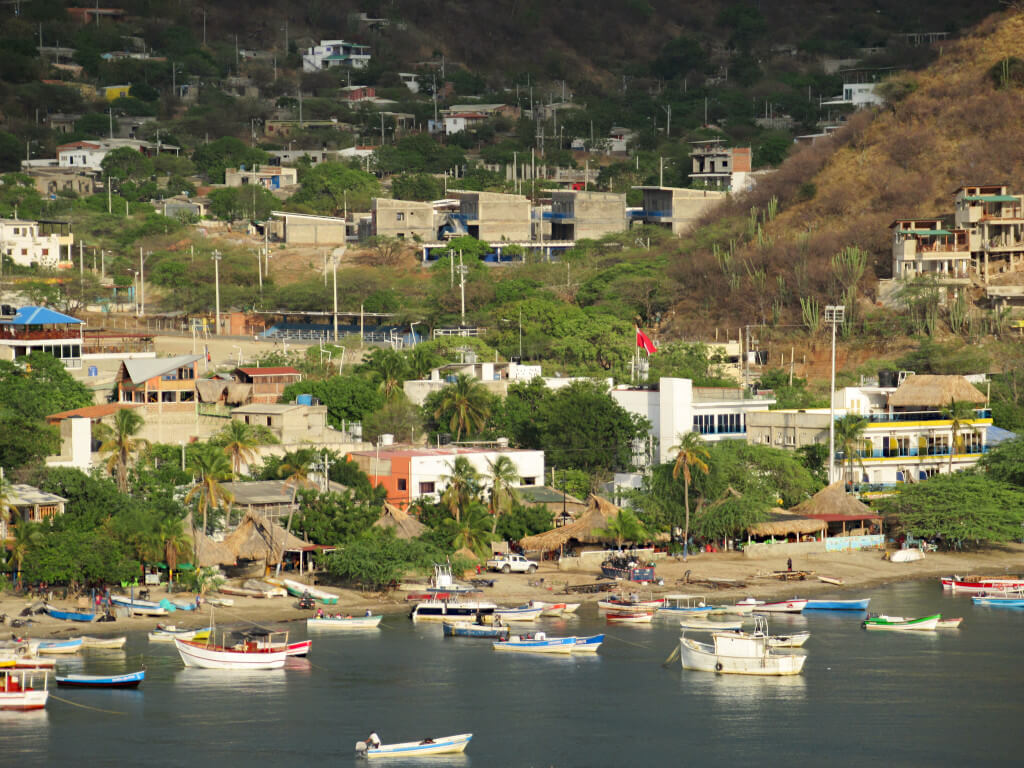
Other Beaches in Taganga
A short walk from Taganga Beach, you’ll find a collection of beaches only reachable by foot along a slightly sketchy hill path. From the northern end of Playa Taganga, follow the footpath uphill, past the power plant and down to the first beach – Playa Grande.
Playa Grande is the most visited beach in Taganga. You can expect families, groups, couples and children here every day. Chairs (like the plastic garden type, not sun loungers) are available to rent, as well as kayaks. Bars and restaurants line the beach, so you could easily spend the day here.
Unfortunately, Playa Grande is pretty heavily polluted. As you descend down the hill from Taganga, you’ll start to see the huge amounts of litter thrown onto the verges and grassy areas. This then ultimately continues onto the beach, where litter covers the sand and shallow sea. I can’t recommend coming here, sadly, as the trash situation is so bad. Luckily, there are more (and better) options.
From Playa Grande Taganga, you can continue taking the coastal path from the northern end of the beach (the opposite end that you arrived from). As you walk along this, you’ll reach some smaller beaches in small bays that aren’t as busy and have less litter. Generally speaking, the further from Taganga Beach you go, the fewer people and less trash you’ll see.
Following the path, you’ll reach at least 4 small beaches – most of which don’t have a name. Once you can’t go any further, you’ll have reached the outer edges of the Tayrona National Park.
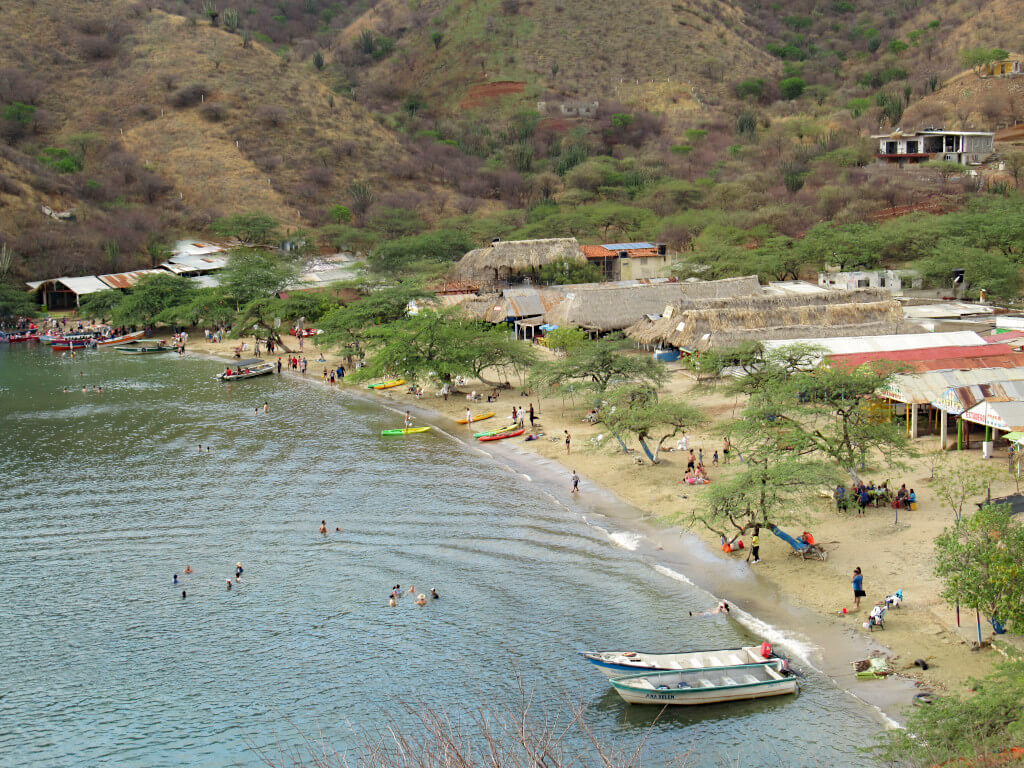
Can You Swim in Taganga?
Yes, if you dare. Personally, I found the amount of rubbish completely off-putting but swimming is allowed at the beaches. At Playa Taganga and Playa Grande there are marked areas to keep boats and swimmers apart, so do respect these.
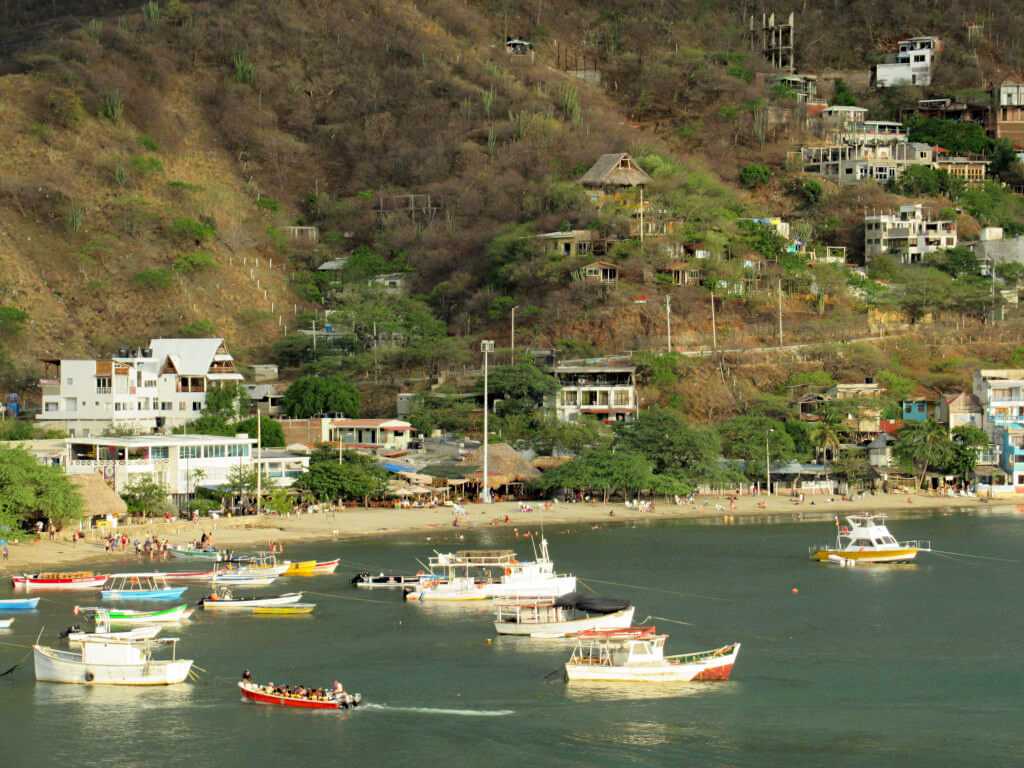
Is Taganga Worth Visiting?
In all honestly, I can’t say that I think Taganga is worth visiting.
Nearby alternative towns tend to offer better experiences of what Taganga has. For example, Santa Marta has nicer hotels and restaurants and Tayrona National Park has far nicer beaches (though there is an entry cost) than Taganga Playa. Palomino is a better all-around option with a more beautiful beach, more choice of hostels, hotels, restaurants and activities and far less trash.
One of the most popular draws of Taganga is cheap scuba diving (around 200,000 COP). However, do expect to get what you pay for in terms of organisation and instructors compared with pricey options around the Caribbean.
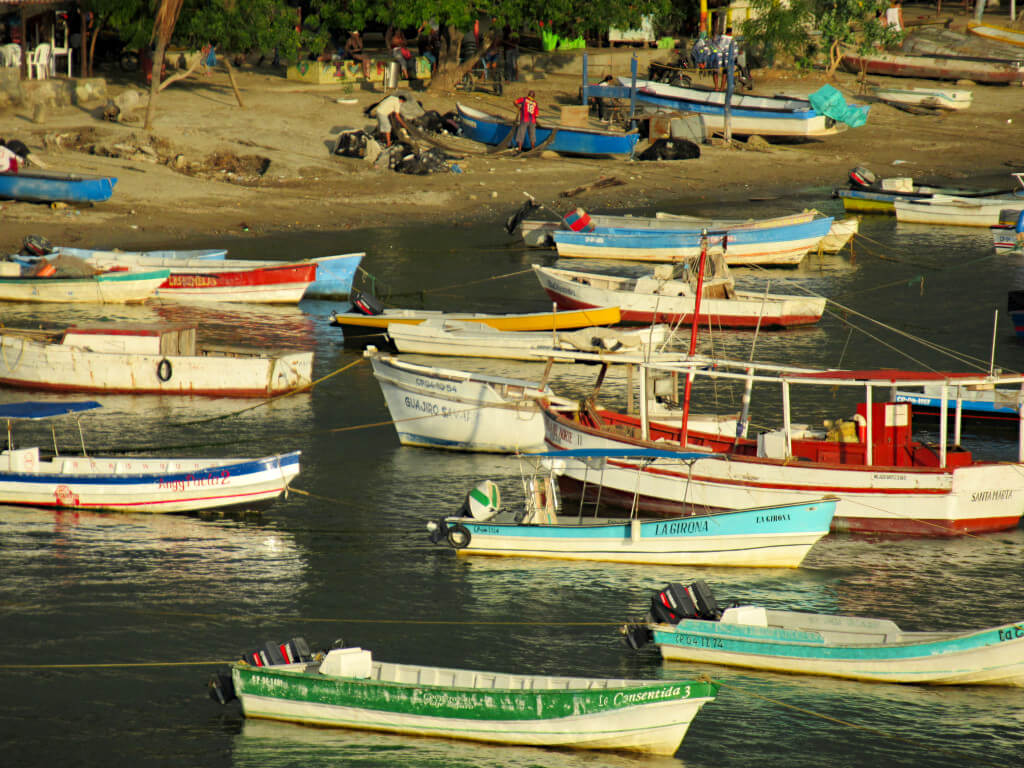
Do you have any questions or want any more information about Taganga Beach? If so, drop a comment below and I’ll get back to you!
Information and prices are correct as of May 2022 but are subject to change in future.
More Colombia Travel Inspiration…
LA GUAJIRA: Tubing in Palomino: Complete Guide to a Must-Do Activity
LA GUAJIRA: Palomino Beach (Colombia’s Caribbean Coast Paradise): Ultimate Guide
SANTANDER: San Gil Santander: Complete Guide to Colombia’s Adventure Capital
SANTANDER: Quebrada Las Gachas Guadalupe: Colombia’s Best Hidden Gem
MEDELLIN: Comuna 13 Medellín (Guide & Recommendations For This Must-Do)
PIN IT FOR LATER!
